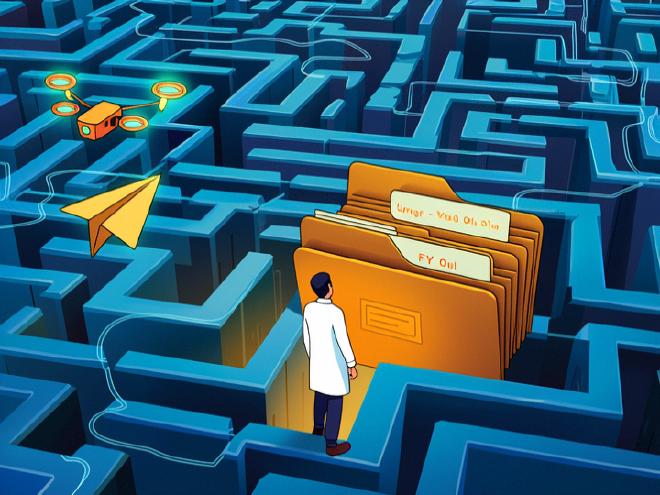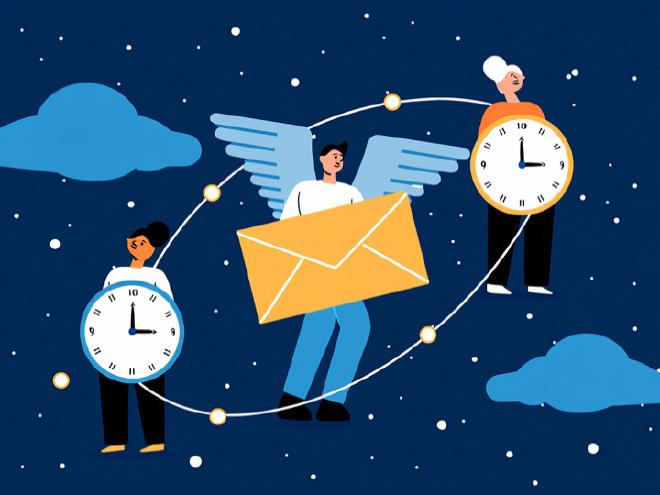Best Practices for Internal Email Communication in Research Teams
Table of Contents
In modern scientific research, efficient team collaboration is the driving force behind the smooth progression of projects. As research projects grow increasingly complex, cross-disciplinary and cross-institutional partnerships have become more common. Ensuring that information is accurately, promptly, and reliably communicated among team members has emerged as one of the key factors determining the success or failure of a study. Despite the proliferation of instant messaging tools and collaborative platforms, email remains the most formal and dependable method for archiving information and assigning tasks within research teams.
However, informal or poorly structured email communication often leads to missed messages, unclear responsibilities, redundant work, and even project delays. This article will systematically outline best practices for internal email communication in research teams, focusing on three core themes: “Research Team Communication,” “Internal Email Management,” and “Project Collaboration Emails.” These guidelines are designed to help teams optimize their collaboration processes and enhance overall efficiency.

I. Clearly Define the Purpose and Role of Email Communication #
In research teams, email serves not only as a tool for conveying information but also as an essential medium for documenting tasks, recording decisions, and ensuring accountability. Therefore, every email sent should have a clear objective:
- Notification Emails: Used to announce meeting schedules, update project progress, or communicate policy changes.
- Decision-Making Emails: Solicit feedback, confirm proposed solutions, or document collective decisions.
- Task Assignment Emails: Clearly specify the person responsible, deadlines, and deliverables.
- Problem-Solving Emails: Present technical challenges and request collaborative support.
✅ Tip: Avoid using email for frequent, trivial exchanges (e.g., “Did you receive it?” or “Got it!”). Such conversations are better suited for instant messaging tools to reduce inbox clutter.
II. Standardize Email Structure for Clarity and Efficiency #
A well-structured email significantly improves readability, especially when team members span multiple time zones or speak different languages. We recommend adopting the following standardized email template:
📨 Example of a Standardized Email Structure: #
Subject: [Project Name] - [Specific Task] - [Deadline/Urgency Level]
1. Background
Briefly explain the current context or the issue at hand.
2. Objective
Clearly state the desired outcome of this communication.
3. Content / Proposal
List key points, supporting data, or suggested solutions in bullet form.
4. Action Items
- Who is responsible? (Owner)
- What is the deadline? (Deadline)
- What is the expected deliverable? (Deliverable)
5. Next Steps
If further discussion or document updates are required, provide advance notice.
6. Attachments and References
Include relevant files, links, or reference numbers.
🔍 Example Subject Line:
[Gene Editing Project] - CRISPR Screening Results Analysis Task Allocation - Feedback by April 10, 2025
This structure not only facilitates quick scanning but also makes it easier to archive and retrieve emails later—perfect for milestone reports or periodic project summaries.
III. Control Email Frequency and Scope to Prevent Information Overload #
Sending emails too frequently or indiscriminately can lead to “inbox fatigue,” causing critical information to go unnoticed. To address this, research teams should establish clear email-sending guidelines:
| Scenario | Recommended Practice |
|---|---|
| Daily Progress Updates | Use weekly summary reports instead of daily individual emails. |
| Internal Team Coordination | Prioritize group mailing lists over mass CCing all members. |
| Urgent Matters | Mark emails with “[Urgent]” in the subject line and briefly explain why. |
| Non-Essential Notifications | Use BCC or selective CCing to protect privacy. |
✅ Best Practice Tip:
Schedule a fixed time each week to send project weekly update emails, consolidating progress, risks, and action items.
For long-term projects, create dedicated email labels or folders to streamline organization.
Encourage the use of the “Mute Thread” feature for non-critical discussions that have already been resolved.
IV. Ensure Transparency and Traceability of Information #
The continuity and reproducibility of scientific research demand that all critical decisions and task changes be thoroughly documented. As a formal communication channel, email plays a crucial role in fulfilling this requirement.
Key Measures to Achieve Information Traceability: #
-
Consistent Naming Conventions
All project-related emails should include a project abbreviation or number in the subject line, such as:[RNA-seq_2025] Data Preprocessing Process Confirmation. -
Regular Archiving of Important Emails
Designate a team member to export key decision-making emails into a shared knowledge repository (e.g., Notion, Confluence, or a team Wiki), creating a comprehensive project history archive. -
Action Item Tracking System
Each task assignment email should include follow-up responses confirming completion, forming a closed-loop process of “Send → Execute → Feedback.” -
Clear Use of CC for Informed Parties
Clearly define roles: To (primary recipient), CC (collaborators), and BCC (supervisors). This prevents confusion about who is accountable for specific actions.
V. Facilitate Cross-Cultural and Cross-Timezone Communication #
Many research teams consist of members from diverse countries and time zones. In such environments, email communication must prioritize inclusivity and timeliness:

- Keep email content concise and professional, especially when addressing an international audience.
- Avoid sending non-urgent emails late at night or during local holidays.
- When requesting feedback, clearly state: “Please reply by [date], regardless of whether you have comments,” to prevent silence from being interpreted as agreement.
- When sharing meeting minutes via email, include a link to the recorded session or provide a text-based summary to accommodate asynchronous participation.
VI. Integrate Email with Collaborative Tools for Enhanced Efficiency #
While email remains the primary channel for formal communication, it shouldn’t be used in isolation. Instead, consider integrating email with complementary tools to maximize productivity:
| Tool Type | How It Complements Email |
|---|---|
| Project Management Tools (e.g., Trello, Asana) | Embed task links directly in emails; automatic notifications trigger status updates. |
| Document Collaboration Platforms (e.g., Google Docs, Overleaf) | Use email to notify collaborators of editing requests while keeping content updated in real-time. |
| Video Conferencing Systems (e.g., Zoom, Teams) | Send agenda emails before meetings and share meeting minutes within 24 hours afterward. |
💡 Pro Tip: Develop an internal “Email vs. Other Tools Guide” for your team, clearly outlining when to use email versus other platforms based on specific scenarios.
Conclusion: Let Every Email Drive Your Research Forward #
Effective internal email management goes beyond mere formatting or etiquette—it reflects the professionalism and organizational maturity of a research team. By standardizing structures, controlling frequency, enhancing traceability, and seamlessly integrating with modern collaboration tools, research teams can significantly reduce communication overhead, boost execution speed, and foster innovation.
🚀 Call to Action:
Encourage your team to discuss and draft an “Internal Email Communication Policy” at your next team meeting. Start with a single email, and together, build a more efficient, transparent, and sustainable culture of scientific collaboration.
Tags: #ResearchManagement #TeamCollaboration
Related Reading: Research Team Communication Tips, Lab Email Templates, Recommended Project Collaboration Tools